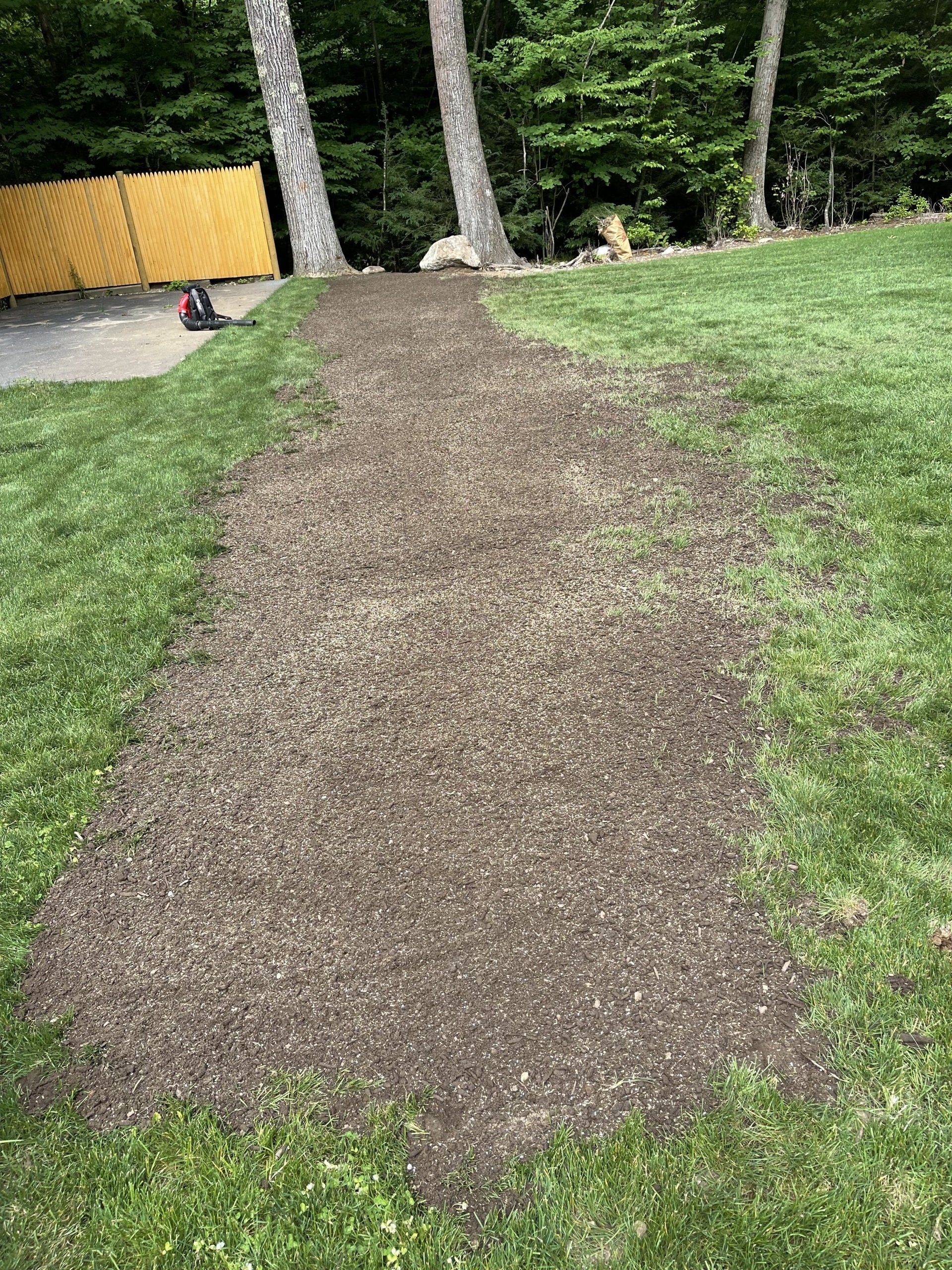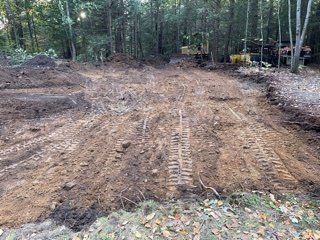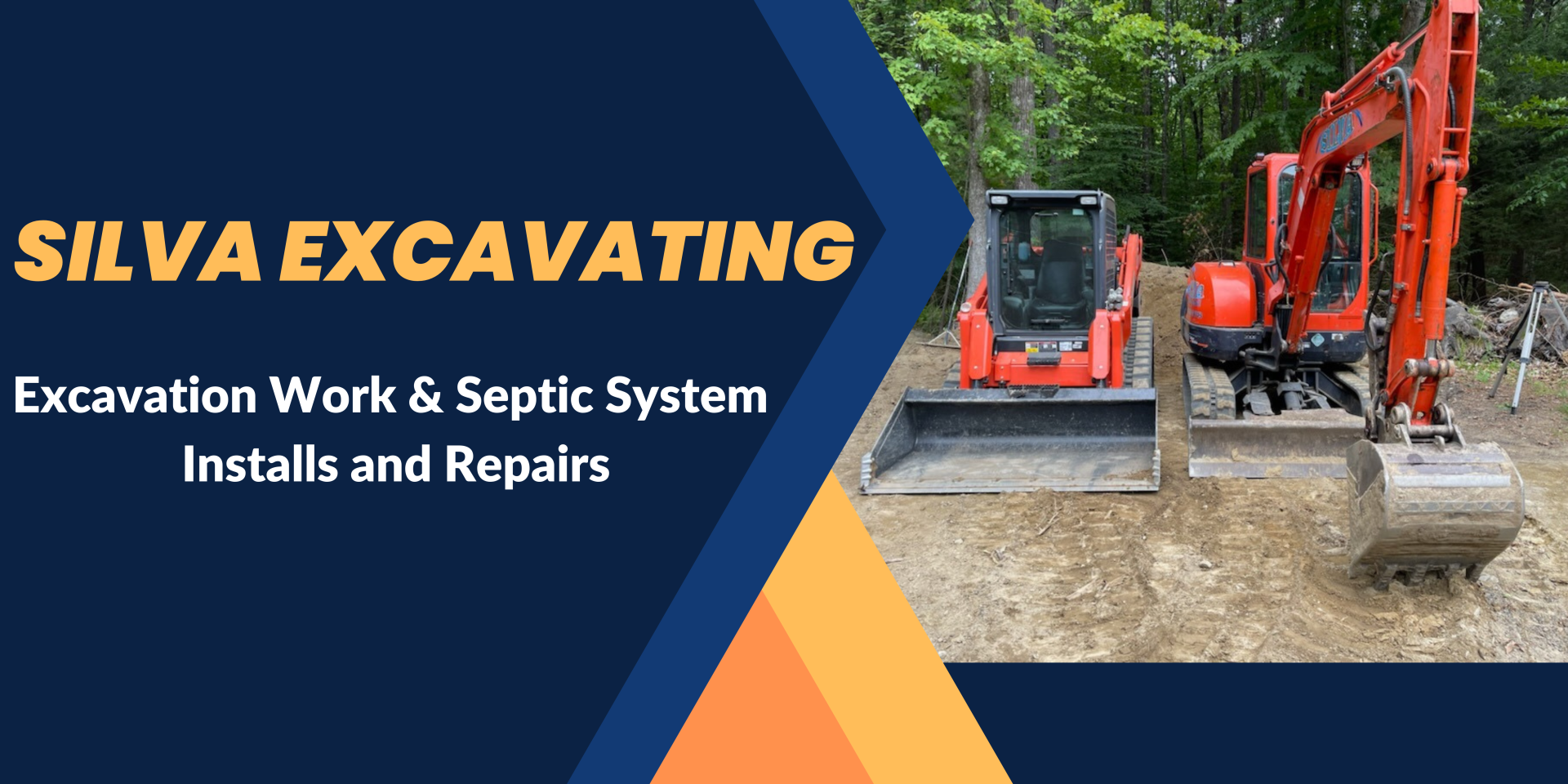Land Clearing Pepperell MA
Tired of Overgrown Lots Holding Back Your Project?
Overgrown land slows down progress, causes costly delays, and increases project expenses. Thick brush, stubborn tree stumps, and unpredictable terrain create big problems when you're trying to prepare your land for construction or landscaping. Without proper land clearing, you risk foundation issues, poor drainage, and construction setbacks.
Don’t Let Rough Land Stop You From Building
Clearing land isn't just about removing trees. Poorly handled land clearing can leave behind roots, rocks, and uneven ground—leading to structural problems later. Erosion issues, water drainage failures, and future landscaping disasters happen when inexperienced crews handle site prep.
At Silva Excavating, we eliminate these risks with professional land clearing services in Pepperell MA. We make sure your property is properly cleared, leveled, and prepared, so your project starts on solid, stable ground.
Start Right With Silva Excavating’s Land Clearing in Pepperell MA
Whether you’re preparing a lot for a new home, driveway, septic system, or commercial building, Silva Excavating offers complete land clearing services with modern equipment and experienced crews. We guarantee safe, thorough, and efficient land preparation, tailored to your project needs.
What Is Land Clearing?
Land clearing is the first step in every construction project, involving the removal of:
- Trees, shrubs, and stumps
- Rocks and large debris
- Old structures, fencing, and junk
- Uneven topsoil or unstable fill
The goal of land clearing is to create a clean, level, and safe site ready for building foundations, driveways, utilities, and landscaping.
Our Complete Land Clearing Process in Pepperell MA
1. Land Survey and Planning
We begin every project with a full property survey to mark lot boundaries, building layouts, and access points. This helps avoid errors during clearing and ensures we follow town regulations.
2. Brush and Tree Removal
We cut, remove, and safely dispose of small trees, heavy brush, and undergrowth. Larger trees are carefully felled and stumps removed using excavators and grinders.
3. Boulder and Rock Removal
Big rocks are removed from the site to make way for smooth grading and foundation work.
4. Grading and Leveling
After clearing, we grade and level the property to ensure proper drainage, prevent erosion, and create a stable base for building.
5. Final Site Preparation
Before construction starts, we prep the land for utilities, driveways, septic installations, and more—setting your project up for long-term success.
Types of Land Clearing Services We Offer
✅
Residential Land Clearing – Clear lots for homes, garages, additions, and backyard projects.
✅ Commercial Land Clearing – Prep land for office buildings, parking lots, warehouses, and storage facilities.
✅ Agricultural Clearing – Clear and prepare farmland, fields, and trails.
✅ Road and Driveway Clearing – Remove trees and debris to open up driveways or private roads.
✅ Septic System Prep – Excavate and clear land for septic system installation.
How Long Does Land Clearing Take?
Most land clearing in Pepperell MA projects are completed in 1-3 days for residential lots and 3-7 days for larger commercial properties. Factors that affect timing include:
- Lot size and topography
- Number of large trees and stumps
- Presence of rocks and old structures
- Drainage or grading complexity
We’ll provide you with a custom timeline before starting work so you know exactly what to expect.
Why Land Clearing Is More Than Just Tree Removal
Land clearing isn’t simply cutting down trees. It’s about:
✔️
Protecting your foundation by removing roots and soft soil.
✔️
Improving drainage to avoid water pooling or flooding.
✔️
Preventing future landscaping problems with proper grading.
✔️
Avoiding erosion issues by prepping soil and installing erosion control where needed.
Silva Excavating goes beyond basic clearing to deliver construction-ready land.
Land Clearing for Better Drainage and Erosion Control
Proper land clearing improves:
- Stormwater drainage: Prevents pooling and reduces the risk of basement leaks.
- Root removal: Stops future foundation or driveway cracking.
- Grading: Controls runoff direction to protect structures from erosion.
- Land stability: Creates a safe base for homes, garages, or barns.
Why Choose Silva Excavating for Land Clearing in Pepperell MA?
✔️ Experienced Local Crews: We know the terrain, soil types, and permitting process in Pepperell.
✔️ Professional Equipment: Excavators, skid steers, stump grinders, and dump trucks on-site—no delays waiting for rentals.
✔️ Affordable Pricing: Transparent estimates with no hidden charges. Residential and commercial jobs welcomed.
✔️ Erosion & Drainage Knowledge: We prepare your land for long-term success, not just quick clearing.
✔️ Fast Turnarounds: We stick to your project timeline to avoid construction delays.
Typical Problems Fixed by Our Land Clearing Services
- Stumps ruining yard space
- Trees blocking new driveways
- Roots damaging old foundations
- Poor drainage causing muddy backyards
- Sloped lots needing grading for new homes
How Much Does Land Clearing Cost in Pepperell MA?
Land clearing costs depend on:
- Lot size (square footage)
- Tree density and size
- Stump and root removal needs
- Grading and drainage complexity
- Disposal and trucking fees
On average:
- Small residential lots: $3,000 – $7,000
- Larger residential or commercial lots: $8,000 – $25,000+
We offer free, detailed quotes tailored to your property’s exact needs.
Our Service Area
📍 Serving Pepperell MA, Townsend, Groton, Shirley, Ayer, Dunstable, and all nearby towns within a 20-mile radius.
Call Silva Excavating – Pepperell’s Land Clearing Experts
Ready to build? Don’t start on a rough, unstable lot. Contact Silva Excavating for safe, reliable, and affordable land clearing in Pepperell MA.
In order to create room for new things, the first step in every development process is to get rid of the old things. When it comes to construction, this involves clearing the area of any landmarks or plants that could be in the way of the work that has to be done on the property. You, as a landowner, are aware that clearing a portion of the property is not as easy as removing a few trees or other pieces of plant and waste from the area. In point of fact, there are many things that need to be considered in preparation for clearing land before any work can get started. When preparing land for clearing, our recommendation is to bring in experts who are familiar with the important factors to take into account as well as how to put those factors into practice.
What is the Process of Land Clearing?
If you want to get started on a construction job, the first thing you have to do is clear the allocated working area of all of the existing waste, land, and any other items that could be there. However, depending on the scale of your project, the land clearing step might take anything from a few hours to several days, and it could need a wide variety of different types of technology to finish. Before you begin land clearing on your project site, there are three different land clearing processes that you need to think about, regardless of the size or scope of your project. In recent years, there have been a number of laws regarding land clearing that have been implemented to ensure that there are no serious effects on the remaining native vegetation as well as soil erosion and climate change. These laws have been put in place to ensure that there are no serious effects on either of these issues.
The following three methods of land clearance should be familiar to you:
- Slashing
- Plant Hire Clearing
- Chemical Clearing
What to expect from Land Clearing Services?
The majority of the time, cleaning a lot entails doing roughly the same thing, however, the length of time it will take to complete the task differs from project to project. In a nutshell, the procedure is comparing the designs for the building to the survey results of the property in order to determine what work has to be done. The land will next be prepared for construction by the land clearing services, which will bring it to a stage where it can be built on.
It is common practice to start this procedure by removing any big boulders or plants that may be present on the site. The majority of building projects face significant challenges due to the presence of bushes and trees. Even if a tree isn't really obstructing anything, there's always a chance that its roots may cause problems in the future. The next thing that has to be done is to grade the site. Once again, the procedure is affected to some degree by the specific characteristics of the land. It is possible that actions such as controlling drainage and preventing erosion may be required to guarantee that the land will remain stable throughout the course of time. It's possible that digging wells and putting in septic systems will also be a part of this operation.
Considerations when Land Clearing
After the rough staking of the land is finished, only then will the vegetation and other barriers on the site be removed. The site's perimeters are marked out during the rough staking process. Our operator identifies the areas of the land that will be cleared and decides what kind of clearance will be required. People are able to carry out the activities if they pay close attention to the instructions and meticulously follow the property designs and measurements. A person working alone won't be able to do the rough staking as fast or as correctly as a trained professional who has expertise in the field. Our experts will also have knowledge in adhering to the building standards, guidelines, and permissions involved with land clearing. This is another area in which we excel. The procedure of laying up rough stakes is anticipated to go more easily as a result of this change. In addition to this, it makes it easier to stick to the project's deadline and do the task correctly the very first time.
After Clearing – Building Preparation
To begin cleaning the area, all plants and barriers must be removed. After that, the land will need to be graded according to the project's specifications by the employees. Some examples of this include sloping the land, rising it, or flattening it in order to get the desired landscape As a result of careful planning and excavation, a variety of different slopes may be created. The land's stability may be improved by regrading. Also, the location of the development and possible road routes are affected by this. These should be properly put at a grade level that makes sense. It is also influenced by the slopes of the land, which guide the flow of rainwater. Ideally, the runoff will be directed away from any existing infrastructure.Drainage channels are made more efficient by the thoughtful arrangement of slopes. It also helps to protect the infrastructure and the soil from erosion by reducing the risk of damage.
🔗Explore More Excavating Services
●🛠️Excavation Pepperell MA
●🛠️Retaining Wall Pepperell MA
●🛠️Septic Install Pepperell MA
●🛠️Drainage Pepperell MA
●🛠️Site Work Pepperell MA
●🛠️Land Clearing Pepperell MA
FAQ – Land Clearing Pepperell MA
What is land clearing?
Land clearing removes trees, brush, rocks, and debris to prepare land for construction, farming, or landscaping projects.
How much does land clearing cost in Pepperell MA?
Prices range from $3,000 to $25,000+ depending on lot size, tree density, and grading needs. We offer free quotes based on your property.
How long does it take to clear a lot?
Most residential lots take 1-3 days, while commercial lots can take up to a week, depending on the size and complexity.
Do you handle grading and drainage after clearing?
Yes, we provide full grading and drainage services to ensure your land is ready for foundations, driveways, and landscaping.
Do you offer lot clearing for septic system installations?
Absolutely. We specialize in full-site prep, including septic excavation and installation preparation.
Are permits required for land clearing in Pepperell MA?
For large projects or certain tree removals, permits may be needed. We help guide you through the permit process.
📞 Call Silva Excavating today—get it cleared, graded, and ready to build the right way!



